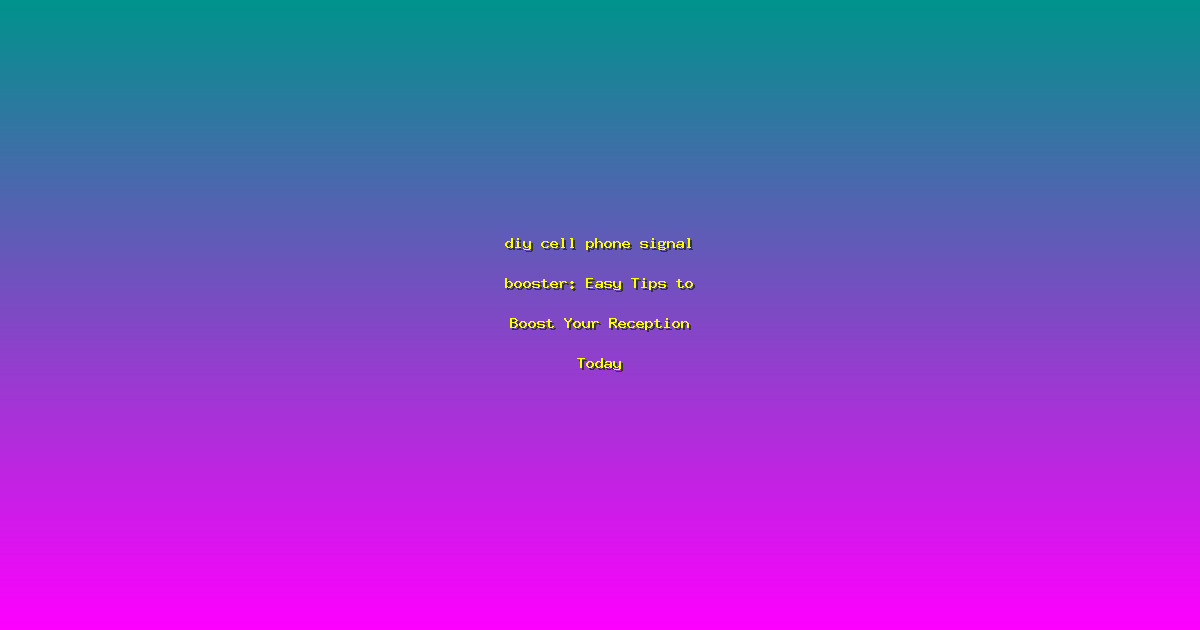DIY Cell Phone Signal Booster: Easy Tips to Boost Your Reception Today
Struggling with poor cell phone reception can be frustrating, especially in areas with limited signal coverage. Whether you live in a rural area or simply have dead spots in your home, there are ways to improve your signal without breaking the bank. This article provides you with simple, easy-to-follow tips to create your own DIY cell phone signal booster.
Understanding the Basics
Before diving into the DIY process, it’s important to understand how a cell phone signal booster works. These devices amplify the weak incoming signal from a cell tower and then broadcast that signal out again, creating a stronger signal in areas where it’s typically weak.
What You’ll Need
To build your own signal booster, you’ll need a few essential components:
- A cell phone signal booster kit
- A power source (usually a 12V car battery or a wall adapter)
- Mounts for both the outside and inside antennas
- Coaxial cables (RG-58 or RG-6 are commonly used)
- Tools like a screwdriver and pliers
Step-by-Step Guide
Follow these steps to install your DIY signal booster:
- Choose a Location: Place the outside antenna in an area with the strongest possible signal, ideally with an unobstructed view of the sky.
- Install the Outside Antenna: Mount the outside antenna to your roof or wall, ensuring it’s secure and properly oriented.
- Set Up the Signal Booster: Connect the coaxial cables from the outside antenna to the signal booster device, which should be placed indoors.
- Mount the Inside Antenna: Install the inside antenna in the area where you need the strongest signal, such as your living room or office.
- Connect the Power Supply: Plug the power adapter into the electrical outlet and connect it to the signal booster.
- Test the System: Once everything is set up, test the signal strength on your phone to ensure the booster is working effectively.
FAQs
How do I know if a DIY signal booster will work for me?
A DIY signal booster is most effective in areas where you have some cell signal but need a stronger one. If you have no signal at all, a DIY booster may not work.
What’s the difference between a DIY and a professional signal booster?
A DIY signal booster is typically less powerful and may not cover as large an area as a professionally installed system. However, it’s a cost-effective solution for simple signal improvements.
Do I need a special license to install a DIY signal booster?
No, you don’t need a special license to install a DIY signal booster. However, it’s important to ensure that the unit you purchase is compliant with FCC regulations.
How long does it take to set up a DIY signal booster?
The setup process can vary based on your experience and the complexity of the installation, but it typically takes between 30 minutes to a couple of hours.
What are the potential drawbacks of a DIY signal booster?
Potential drawbacks include limited coverage area and power, which may not be sufficient for large spaces or areas with very weak signals. Additionally, improper installation can lead to poor performance.
